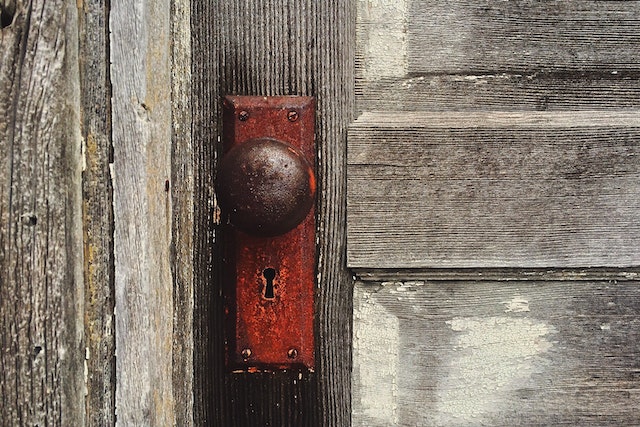Welcome to our blog post all about door latches! Have you ever wondered what exactly a door latch is and why it’s important? Well, you’ve come to the right place. Whether you’re a homeowner looking to upgrade your security or just curious about home improvement, this article will provide all the information you need. So, let’s dive in and explore the world of door latches together!
What is the door latch?
A door latch is a simple yet vital component of any door. It serves as the mechanism that keeps your doors securely closed, providing both privacy and security for your home or office space. Essentially, it acts as a lock, ensuring that only those with permission can gain access.
There are various types of door latches available on the market today. The most common ones include mortise latches, tubular latches, rim latches, and cylindrical latches. Each type operates slightly differently but ultimately serves the same purpose – to secure your door.
Installing a door latch may seem like a daunting task at first glance, but it’s actually quite straightforward. Generally speaking, you’ll need some basic tools such as a screwdriver and drill to complete the installation process. It’s important to follow the manufacturer’s instructions carefully and ensure that the latch is properly aligned with both the strike plate and the corresponding hole in your door frame.
Like any other component, there are pros and cons associated with using a door latch. On one hand, they provide an added layer of security without requiring complex mechanisms or expensive technology. They are also relatively easy to install compared to other locking systems. However, depending on their quality and design, some might be more prone to wear and tear over time.
In conclusion (not really concluding just ending naturally), understanding what a door latch is gives you valuable insight into how it functions within your everyday life. From securing entry points in our homes to maintaining privacy in office spaces or bedrooms – these unassuming devices play an essential role in our day-to-day activities!
The Different types of door latches
The Different types of door latches
When it comes to securing your doors, there are various types of door latches available in the market. Each type serves a specific purpose and offers different levels of security.
One common type is the spring latch, also known as a latch bolt. This type of latch automatically engages when the door is closed and can be easily opened from either side with a simple knob or lever. It provides convenience but may not offer the highest level of security.
Another popular option is the deadbolt latch. Unlike spring latches, deadbolts require manual operation to engage or disengage them. They offer enhanced security as they cannot be easily forced open by burglars.
For added convenience and security, you might consider electronic or smart latches. These high-tech options allow you to control access to your doors remotely through a smartphone app or keypad entry system.
Mortise latches are another type worth mentioning. They are commonly used in wooden doors and provide excellent strength and durability.
It’s important to choose the right type of latch that suits your needs based on factors such as desired level of security, ease of installation, and compatibility with your existing door hardware.
Remember that proper installation is crucial for optimal performance regardless of which type you choose.
How to install a door latch
Installing a door latch may seem like a daunting task, but with the right tools and guidance, you can do it yourself. Here’s a step-by-step guide to help you through the process.
First, gather all the necessary materials: a door latch kit (which usually includes the latch mechanism, strike plate, screws, and template), a drill with bits suitable for your door material (wood or metal), a screwdriver, and measuring tape.
Start by positioning the template on the desired location of your door. Ensure that it is level and mark where you need to drill holes for both the latch mechanism and strike plate.
Next, using appropriate drill bits, carefully bore holes according to your markings. Be cautious not to go too deep or damage the surrounding area.
Now it’s time to install the latch mechanism. Insert it into its designated hole on either side of the door. Secure it in place using screws provided in your kit.
Attach the strike plate onto its designated spot on the jamb side of your doorway using screws again. Make sure it aligns perfectly with the latch when closed.
Congratulations! You have successfully installed a new door latch! Remember to test its functionality by closing and opening your door multiple times before considering this project complete
Pros and Cons of a door latch
Pros and Cons of a Door Latch
Like any other home accessory, door latches have their own set of advantages and disadvantages. Here are some pros and cons to consider before installing a door latch:
Pros:
1. Security: A door latch adds an extra layer of security to your doors, making it more difficult for intruders to break in.
2. Convenience: Door latches are easy to operate, requiring minimal effort to lock or unlock the door.
3. Versatility: There are various types of door latches available on the market, catering to different needs and preferences.
4. Cost-effective: Compared to other locking mechanisms like deadbolts or electronic locks, door latches are generally more affordable.
Cons:
1. Limited protection: While a door latch provides some level of security, it may not be as effective as stronger lock options such as deadbolts.
2. Vulnerable installation: Improper installation can make the door latch susceptible to tampering or forced entry.
3. Accessibility issues: Some individuals with physical disabilities or limited dexterity may find operating a traditional door latch challenging.
4. Less decorative options: Unlike certain lock types that come in aesthetically pleasing designs, many standard door latches have a simple and utilitarian appearance.
In conclusion,
Door latches offer an accessible and cost-effective way to enhance security within your home without compromising convenience. However, while they provide basic protection against unauthorized access, they may not offer the same level of security as more robust locking mechanisms like deadbolts.
Ultimately,
the choice between using a standard latch or opting for alternative locking methods will depend on your specific needs and circumstances. It’s essential always to prioritize safety when selecting any type of locking mechanism for your doors.
Remember,
consulting with professionals who specialize in home security systems can help you determine the most suitable option for safeguarding your space effectively!


